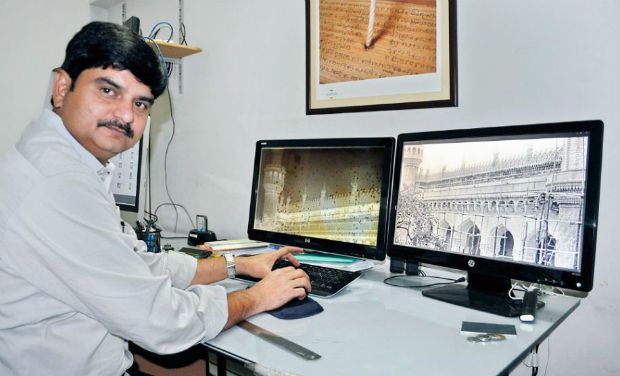
Hyderabad:
Bruno Jehle arrived in India in 1983, “when India was still taking shape”. Soon after his arrival in Mumbai, the tall Swiss hopped on a train and embarked on a very long, 30-hour trip to what was then, the grand city of Madras.
“I remember the slums around Adyar. People looked at me and immediately assumed that I had lots of money and that I could help them out of their many problems. But I didn’t have a penny and yes, life in the slums was tough, demanding and challenging.”
But Jehle soon started helping out in a business selling eggs, dealt with thugs and made life-long friends. It is that very link with “that true India” that left an indelible mark, which was clearly evident during his meeting with the DC, where he explained what the Switzerland-based BJ Institute is doing in the bylanes of West Marredpally.
The Nizam’s photos
One of the founders of the institute, Jehle, a lithographer by trade, has over the past seven years, managed to train a small team of Hyderabadi photo specialists to restore and digitise some of the first photos taken of the city and beyond.
These photographs, dating back at least a 100 years, were taken by the Hyderabad Department of Archeology — a rag-tag bunch of photographers commissioned by the erstwhile Nizam’s government to shoot and document historical structures, artifacts and excavations across the dominion and the neighbouring regions. What the photographers did then, was the first ever photo survey of the region, taking over 60,000 photographs of structures ranging from the 1,000-pillar temple at Hanamkonda to the Ajanta Elora caves of Maharashtra.
The photographs were stored as negatives, inside crates that piled from floor to roof. When the state of Andhra Pradesh was formed in 1956, the photos moved into the hands of the newly-designated Department of Archae-ology of Museums and the officials then moved the precious photos into a room, where they rested for 99 years, subject to heat, dust and the elements.
That’s until Jehle’s and his Indian partner Paulus Rave-endra Eduri pitched to the government that they had the means and motivation to restore and preserve the photographs, with a 300-year warranty.
Paint and polish
So in the October of 2012 began the task of sorting and cataloguing the thousands of photo negatives. An entire ‘clean room’ was built from the ground up, equipment was brought in, personnel were hired, documents were signed and a small, tight team, along with representatives from the government, went to work.
“We had to guard the room against natural light, clean it up and then take photos of the negatives. But then we knew what the challenges were and this was not the job where we could’ve cut corners,” said Eduri.
The final product is stunning. Printed on the choicest of paper, the collection of restored photographs offer a never-seen-before insight of the monuments and people from an era that’s mandatory study for several experts. The photographs show clothing, modes of transport, trade, layouts of towns and much more.
“This is what I want people to see. Our small team in Hyderabad has managed to bring out the life and times of a forgotten people,” adds Jehle.
And in that little house in West Marredpally is also where the Indo-Swiss collaboration has come full circle. In 1948, just after India’s Indepen-dence, the nation’s leading lights had sent out a sort of SOS to the Swiss government, asking for help in infrastructure development. Jehle and Eduri’s work then is the coming together of a 65-year-old idea, an initiative… that is finally taking form in Hyderabad.
source: http://www.deccanchronicle.com / Deccan Chronicle / Home> Nation> Current Affairs / DC / by Govind Vijaykumar / December 15th, 2014